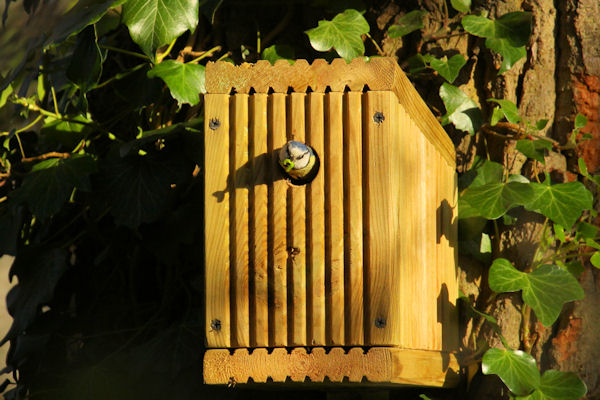February in Bicknor Wood.
February was a month of contrasting weather. Snow during the first half of the month brought a stillness to the wood and subdued the growth that was evident in January. The birds which had already started to sing were muted, preferring to concentrate their efforts on getting through the cold conditions. The activity around the nest boxes stopped, although it is possible that some were used as shelter from the worst of the cold. Someone took a look.
Tracks in the snow showed that foxes have been active in the wood as have the rabbits, squirrels and even a wood mouse that darted across the path, using the path-lining logs as cover.
Discouragingly, there was also a lot of evidence that people are walking off the trails. The bluebells are pushing through and are very vulnerable to trampling. After being crushed underfoot, bluebells cannot take energy from the sun and take a long time to recover. Please remain on the paths and encourage others to do so too. Thank you.
The wildflowers that had started to show last month, were blanketed and slowed by the snow. Most of them took a week to recover after the snow had thawed, but milder temperatures and some brightness has encouraged them on again.
Lesser celandine has started to leaf, but the acid yellow flowers are not showing yet. The first flowers of the year are from primroses and common field-speedwell. Along the southern edge of the wood the sun is warming the ground and a few more plants are starting to poke through. Crane's bill and dog's mercury have been seen.
Following the catkins from the hazels last month, the next trees to bud are the sallow, also known as the pussy willow or goat willow (above) and the aspen (below). The Sallow has male and female catkins on the same tree whilst the aspen bears male and female catkins on separate trees.
The cold snap broke on Valentine's Day, bringing warmer, wetter weather. Then a dry spell brought the birds back to their singing perches. Goldfinches have been heard bubbling at the top of birches and oaks and the Song Thrush can be heard throughout the wood, singing its repeating refrains. Listen for the difference between the hard Great Tit, (cha, ticha, ticha, ticha) and the softer Coal Tit (seechu, seechu, seechu). The Wren can be heard like a tiny, strident machine gun, firing trills from the brambles. Long-tailed Tits, Eurasian Magpies and Woodpigeons have been seen collecting nesting materials (22/02/21). Robins continue to sing vigorously, with at least 4 territories being stated.
The winter visitors were were greatly increased by continental refugees including Fieldfares during the snow, but numbers decreased almost as soon as the snow disappeared. Lesser Redpolls last noted on 25th, Redwing on 26th.
Dunnock
30 bird species were seen during February;
Stock Dove, Woodpigeon, Eurasian Collared Dove, Black-headed Gull, Herring Gull, Great Spotted Woodpecker, Green Woodpecker, Eurasian Jay, Eurasian Magpie, Jackdaw, Carrion Crow, Coal Tit, Eurasian Blue Tit, Great Tit, Long-tailed Tit, Goldcrest, Eurasian Nuthatch, Eurasian Treecreeper, Eurasian Wren, European Starling, Song Thrush, Redwing, Fieldfare, Eurasian Blackbird, European Robin, Dunnock, Common Chaffinch, Eurasian Bullfinch, Lesser Redpoll European Goldfinch.
In other news; whilst not strictly within the remit of the blog, a peacock butterfly and a pipistrelle-style bat were seen on 24th and 25th respectively in my garden.
March is coming. Chiff Chaff month.










Comments
Post a Comment